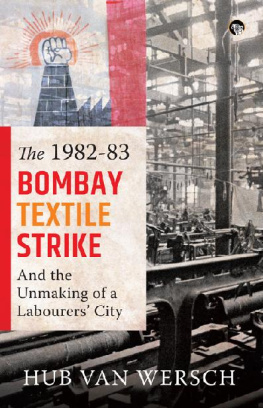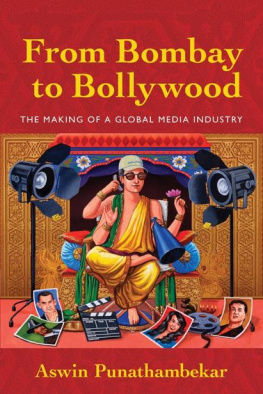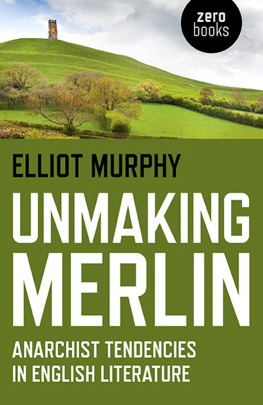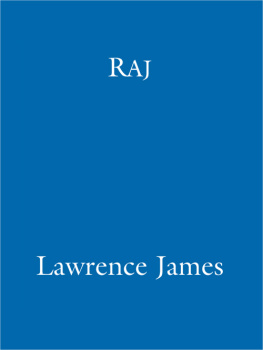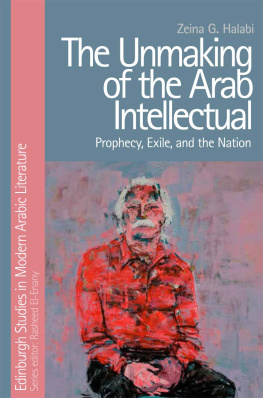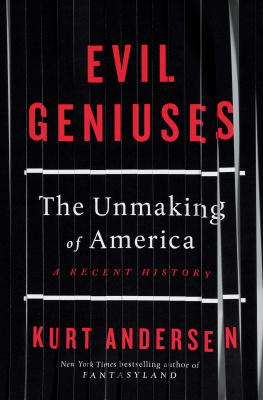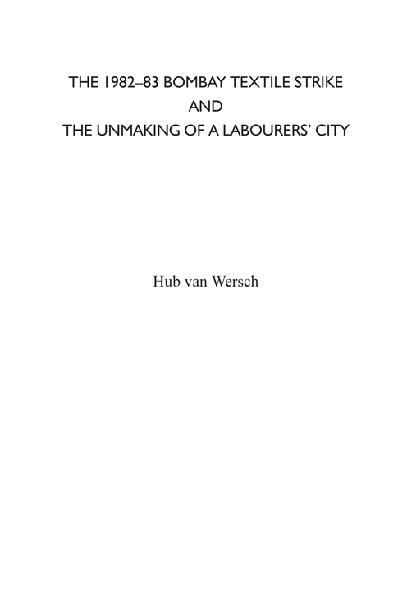Hub van Wersch came to India for the first time in 1972. He married an Indian hailing from Maharashtra and has been visiting and studying the country since then. Van Wersch qualified as a social anthropologist at the University of Amsterdam in the Netherlands. His study of the greatest industrial cataclysm of our time, Bombay Textile Strike 198283 , was widely acclaimed as a substantial contribution to the understanding of the disastrous developments during that period.
Later Van Wersch moved to different fields of activity (communication and politics). Apart from scientific contributions, he presently writes novels and short stories.
PRAISE
The book continues to be the foundational academic study of this key moment in the contemporary history of South Asian labour.
Professor Ravi Ahuja, Georg-August-Universitt, Gttingen, Germany
A most important contribution to the study of labour relations and Government legislations which has such a pervading influence.
A. Thyagarajan, The Hindu
The strike was the story not only of employers and workers, but of the government, the police, the press, the unions, the peasants who donated food and the relatives who maintained the striking workers. The most impressive contribution of the book is narrating how each of them related to the strike. The outcome is a grimmer picture than was portrayed in the press.
Tirthankar Roy, The Indian Economic and Social History Review
One may disagree with some of van Werschs views and formulations. One can hardly disagree, however, about the immense value of the results of his research into the Bombay textile strike. It undoubtedly fills, and fills very competently, a glaring gap in the chronicle of the trade union movement and labour struggles in India.
Bagaram Tulpule, Economic and Political Weekly
The massive tome of more than 200,000 words is the result of a year of study in Bombay, including residence in a workers chawl in Prabhadevi, extensive interviews and careful analysis of secondary materials. The thesis dispels many popular myths put out by the mass media, and lends substance to what the intelligentisa has believed all along. A close look at this description of a strike which might get into the Guinness Book is eminently worthwhile.
E.A. Ramaswamy , Business India
For
Jairam, Anil, Shamrao, Haricharan and Baluram
CONTENTS
PART 1
THE STORY OF THE STRIKE
PART II
COPING WITH THE STRIKE
LIST OF TABLES
Key to numeration: 1 lakh = 1,00,000
1 crore = 10 million
ABBREVIATIONS
AICC | All India Congress Committee |
AITUC | All India Trade Union Congress |
ATIRA | Ahmedabad Textile Industrys Research Association |
BIR Act | Bombay Industrial Relations Act, 1946 |
BMOA | Bombay Millowners Association (also: MOA) |
BMS | Bharatiya Mazdoor Sabha |
BTRA | Bombay Textile Research Association |
CITU | Centre of Indian Trade Unions |
CM | chief minister |
COD | Charter of Demands |
CPI | Communist Party of India |
CPI (M) | Communist Party of India (Marxist) |
DA | Dearness Allowance |
ESIS | Employees State Insurance Act, 1948 |
ESMA | Essential Service Maintenance Act |
FE | Financial Express |
GKS | Girni Kamgar Sabha (Janata Party)
Girni Kamgar Sena (Shiv Sena) |
GKU | Girni Kamgar Union (later: MGKU) |
GOI | Government of India |
GOM | Government of Maharashtra |
HMS | Hind Mazdoor Sabha |
HOSOCTI | Handbook of Statistics on Cotton-Textile Industry |
HPC | High Power Committee |
HRA | House Rent Allowance |
ICMF | Indian Cotton Mills Federation |
IE | Indian Express |
ILO | International Labour Organization |
INTUC | Indian National Trade Union Congress |
KKS | Kapad Kamgar Sanghatana |
LBGKU | Lal Bawta Girni Kamgar Union |
LNP | Lal Nishan Party |
MGKU | Maharashtra General Kamgar Union (Datta Samant)
Maharashtra Girni Kamgar Union (Datta Samant)
Mumbai Girni Kamgar Union (before: GKU) |
MLA | Member of the Legislative Assembly |
MMS | Mill Mazdoor Sabha |
MOA | Millowners Association (Bombay) |
MP | Member of Parliament. |
NSA | National Security Act |
NTC | National Textile Corporation |
RMMS | Rashtriya Mill Mazdoor Sangh |
SSS | Sarva Shramik Sangh |
SV | Shramik Vichar |
SC | Scheduled Castes |
TLA | Textile Labour Association (Ahmedabad) |
TOI | Times of India |
TUJAC | Trade Unions Joint Action Committee |
PREFACE
During that time [198283], a strike had begun in my fathers [textile] mill, which never ended. And by trusting upon the union leaders assurances, my father eventually passed away Father passed away, and the mill has closed down too. And now, on the same textile mill lands stands a huge and posh [shopping] mall. Whenever I see a poor and helpless person in that mall, I feel that in their mind the strike still goes on.
Mumbai Meri Jaan , 2008
The above text that evokes the historic 198283 Mumbai textile strike is from a Hindi film Mumbai Meri Jaan . The film, released in 2008, revolves around the serial bomb blasts that took place in 2006 in the Mumbai local trains. The reference to the mill workers and the 198283 strike appears very briefly and only towards the end of the film when Tukaram Patil, a policeman performed by actor Paresh Rawal, is giving a farewell speech on the eve of his retirement. While talking about Mumbais transformations, Patil talks about his mill worker father and how the trade union leaders misjudgement resulted in the eventual closure of the textile mills which subsequently jeopardised the lives of mill workers and their families. Over the past two decades, the 198283 strike conducted by the Mumbai mill workers has appeared in popular Marathi and Hindi feature films but mostly in the background. In a way, this is not surprising but a reflection of the developments since the 1980s which, as Ahuja argues, saw a severe depreciation of labour as a political category (Ahuja, 2013: ix).

